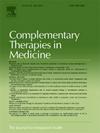Spirulina’s impacts on cardiovascular health: Insights from a systematic meta-analysis of RCT
IF 3.5
3区 医学
Q1 INTEGRATIVE & COMPLEMENTARY MEDICINE
引用次数: 0
Abstract
Introduction
CVDs are considered the major public health concern and mortality in the world. Common treatments have some side effects and require low-risk treatments, such as herbal medicine. Spirulina is a filamentous microalga that has improved cardiometabolic parameters.
Methods
Systematic searches were conducted in Scopus, ISI Web of Science, and PubMed/Medline databases up to 20 January 2025 to identify RCTs based on the PRISMA checklist and PICOS criteria (People > 18 years, Intervention: spirulina, Comparison: placebo /control, Outcomes: TG, TC, LDL-C, HDL-C, FBG, HbA1c, insulin, HOMA-IR, SBP, DBP, BMI, weight, hs-CRP, IL-6, TNF-α, and Study: RCTs). Meta- analysis was utilized by random-effects models, and the GRADE criteria ensured the certainty of results.
Result
The results of 35 trials (45 effect sizes) show that spirulina intake improved glucose homeostasis (FBG; WMD: −5.51 (mg/dl); P = 0.001, HOMA-IR; WMD: −0.68; P < 0.001, and insulin; WMD: −0.86 (ng/ml); P = 0.002), decreased dyslipidemia (TG; WMD: −14.75 (mg/dl); P < 0.001, TC: WMD: −11.5 (mg/dl); P < 0.001, LDL-C; WMD: −7.69 (mg/dl); P < 0.001, and HDL-C; WMD: 1.9 (mg/dl); P < 0.001), decreased blood pressure (SBP; WMD: −3.85 mmHg, P = 0.002, and DBP; WMD: −3.09 mmHg, P < 0.001), reduced anthropometric indexes (weight; WMD: −1.78 kg; P = 0.003, and BMI; WMD: −0.58 kg/m²; P = 0.001), and decreased inflammation (TNF-α; WMD: −0.46 pg/ml; P = 0.01, IL-6; WMD: −0.58 pg/ml; P < 0.001, and hs-CRP; WMD: −0.86 mg/L; P = 0.002). Based on GRADE analysis, LDL-C, FBG, and HbA1c had of low quality, while the outcome for weight was of high quality. Furthermore, other parameters had moderate-quality outcomes.
Conclusion
This study demonstrates that spirulina supplementation effectively reduces the risk of CVD in adults by improving glucose homeostasis, dyslipidemia, blood pressure, anthropometric indexes, and inflammation. So, intake of spirulina is an adjunct or complementary to improve cardiometabolic profiles.
Trial registration
PROSPERO registration cod: (CRD42024626090)
螺旋藻对心血管健康的影响:来自随机对照试验系统荟萃分析的见解
心血管疾病被认为是世界上主要的公共卫生问题和死亡率。普通的治疗方法有一些副作用,需要低风险的治疗,比如草药。螺旋藻是一种丝状微藻,具有改善心脏代谢参数的作用。方法系统检索Scopus、ISI Web of Science和PubMed/Medline数据库,截至2025年1月20日,根据PRISMA检查表和PICOS标准(患者18岁,干预:螺旋藻,比较:安慰剂/对照,结局:TG、TC、LDL-C、HDL-C、FBG、HbA1c、胰岛素、HOMA-IR、收缩压、舒压、BMI、体重、hs-CRP、IL-6、TNF-α和研究:rct)确定rct。随机效应模型采用Meta分析,GRADE标准保证了结果的确定性。结果35项试验(45个效应量)的结果表明,螺旋藻摄入改善了葡萄糖稳态(FBG; WMD: - 5.51 (mg/dl);0.001 P = HOMA-IR;大规模杀伤性武器:−0.68;P <; 0.001,胰岛素;WMD:−0.86 (ng/ml);P = 0.002),降低血脂异常(TG; WMD:−14.75 (mg/dl);P <; 0.001,TC: WMD: - 11.5 (mg/dl);P & lt; 0.001,低密度;WMD:−7.69 (mg/dl);P <; 0.001,HDL-C;WMD: 1.9 (mg/dl);P & lt; 0.001),降低血压(SBP;大规模杀伤性武器:−3.85 mmHg, P = 0.002,和菲律宾;大规模杀伤性武器:−3.09 mmHg, P & lt; 0.001),降低人体测量指标(体重;大规模杀伤性武器:− 公斤1.78;P = 0.003,体重指数;大规模杀伤性武器:−0.58 公斤/ m²;P = 0.001),并降低炎症(TNF -α;大规模杀伤性武器:−0.46 pg / ml; P = 0.01,il - 6,大规模杀伤性武器:−0.58 pg / ml; P & lt; 0.001,和hs-CRP;大规模杀伤性武器:−0.86 mg / L; P = 0.002)。根据GRADE分析,LDL-C、FBG和HbA1c的结果质量较低,而体重的结果质量较高。此外,其他参数具有中等质量的结果。结论本研究表明,螺旋藻补充可通过改善葡萄糖稳态、血脂异常、血压、人体测量指标和炎症,有效降低成人心血管疾病的风险。因此,螺旋藻的摄入是一种辅助或补充,以改善心脏代谢谱。试用注册普洛斯佩罗注册编号:(CRD42024626090)
本文章由计算机程序翻译,如有差异,请以英文原文为准。
求助全文
约1分钟内获得全文
求助全文
来源期刊

Complementary therapies in medicine
医学-全科医学与补充医学
CiteScore
8.60
自引率
2.80%
发文量
101
审稿时长
112 days
期刊介绍:
Complementary Therapies in Medicine is an international, peer-reviewed journal that has considerable appeal to anyone who seeks objective and critical information on complementary therapies or who wishes to deepen their understanding of these approaches. It will be of particular interest to healthcare practitioners including family practitioners, complementary therapists, nurses, and physiotherapists; to academics including social scientists and CAM researchers; to healthcare managers; and to patients. Complementary Therapies in Medicine aims to publish valid, relevant and rigorous research and serious discussion articles with the main purpose of improving healthcare.
 求助内容:
求助内容: 应助结果提醒方式:
应助结果提醒方式:


